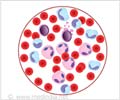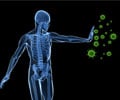Review the side-effects of Enasidenib as documented in medical literature. The term "side effects" refers to unintended effects that can occur as a result of taking the medication. In majority of the instances these side-effects are mild and easily tolerable, however sometimes they can be more severe and can be detrimental.
If the side effects are not tolerable adjusting the dosage or switching to a different medication can help to manage or overcome side effects. If you have any doubts or questions, we recommend seeking advice from your doctor or pharmacist.
Common: Increased level of bilirubin, reduced calcium or potassium levels in blood, nausea, vomiting, diarrhea
Gastrointestinal: Loss of appetite, stomach pain
Cardiovascular: Irregular heart rhythm
Respiratory: Difficulty in breathing, hypoxia, acute respiratory distress syndrome, pulmonary edema (fluid accumulation in the lung), lung failure
Blood: Differentiation syndrome, non-infectious leucocytosis
Skin: Yellowish coloration of the skin, rashes, itching, blistering or peeling of the skin
Others: Fever, jaundice, weight loss, tumor lysis syndrome, taste disturbances, increased blood uric acid levels, reduced phosphorous levels in the blood
• Drink plenty of water or any other fluids as advised while on enasidenib treatment.
• Women of childbearing age should take a pregnancy test before enasidenib therapy and can continue the treatment only if the test shows negative.
• Call for emergency help if the victim is not breathing or collapsed.
If the side effects are not tolerable adjusting the dosage or switching to a different medication can help to manage or overcome side effects. If you have any doubts or questions, we recommend seeking advice from your doctor or pharmacist.
Common: Increased level of bilirubin, reduced calcium or potassium levels in blood, nausea, vomiting, diarrhea
Gastrointestinal: Loss of appetite, stomach pain
Cardiovascular: Irregular heart rhythm
Respiratory: Difficulty in breathing, hypoxia, acute respiratory distress syndrome, pulmonary edema (fluid accumulation in the lung), lung failure
Blood: Differentiation syndrome, non-infectious leucocytosis
Skin: Yellowish coloration of the skin, rashes, itching, blistering or peeling of the skin
Others: Fever, jaundice, weight loss, tumor lysis syndrome, taste disturbances, increased blood uric acid levels, reduced phosphorous levels in the blood
Other Precautions :
• Do not stop taking or alter the dose without physician’s advice.• Drink plenty of water or any other fluids as advised while on enasidenib treatment.
• Women of childbearing age should take a pregnancy test before enasidenib therapy and can continue the treatment only if the test shows negative.
• Call for emergency help if the victim is not breathing or collapsed.








